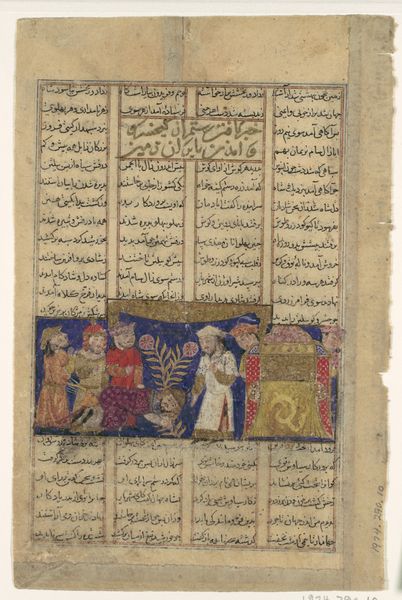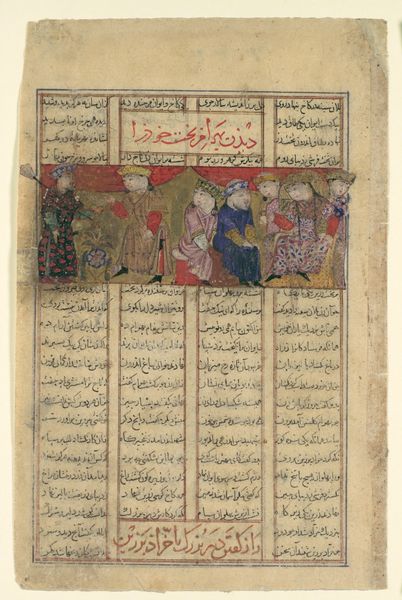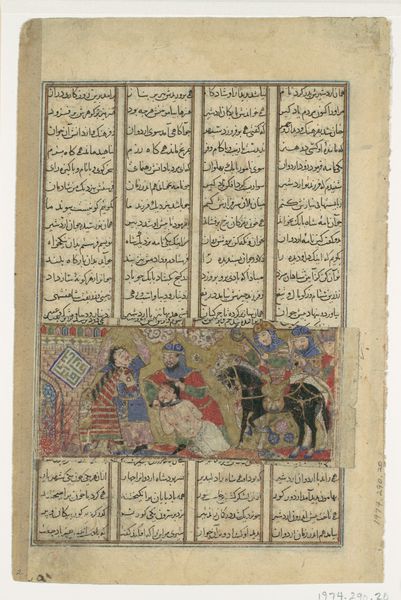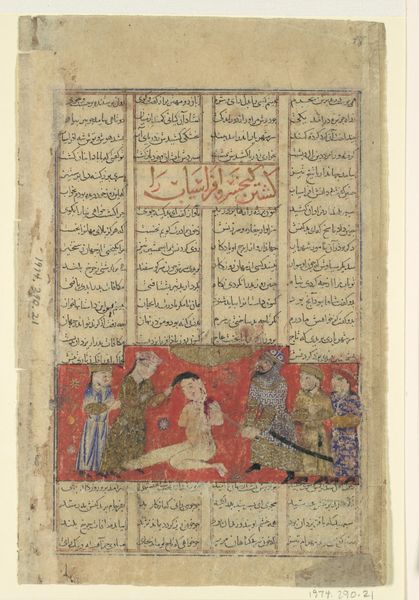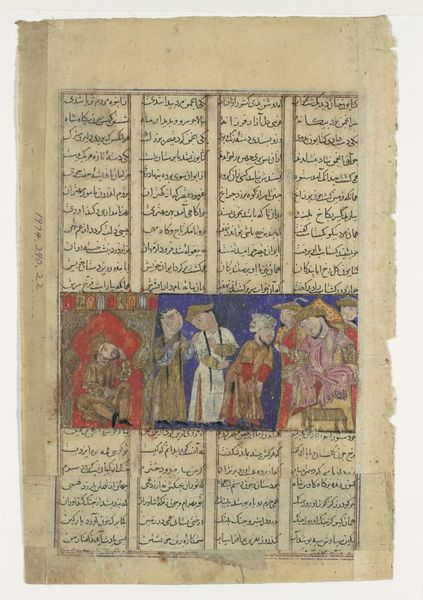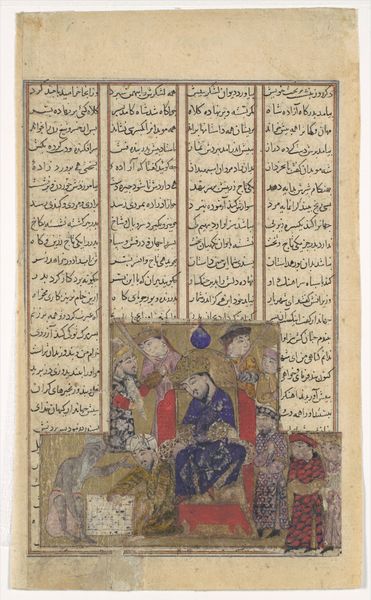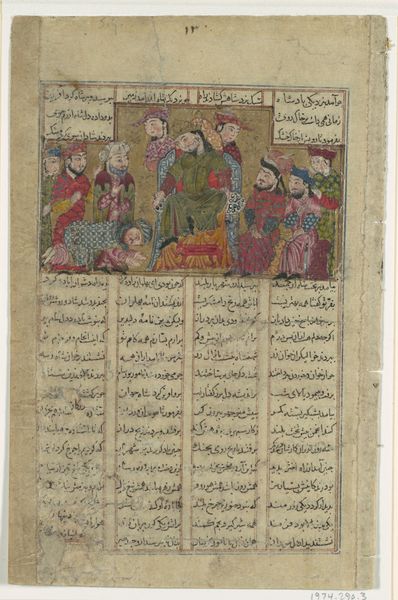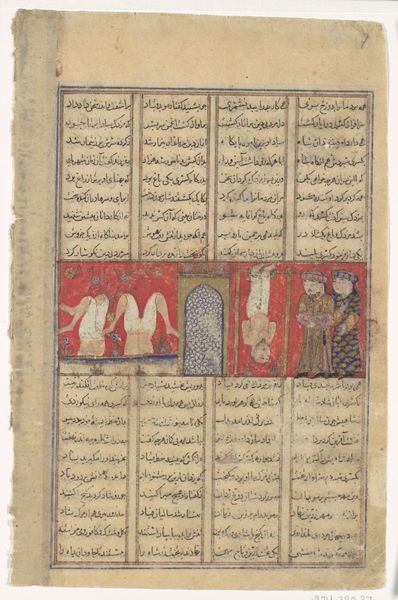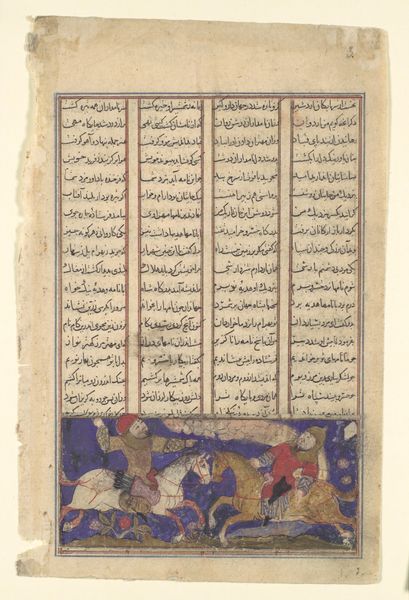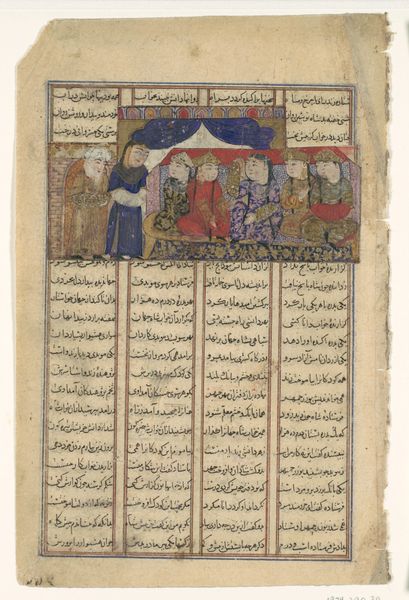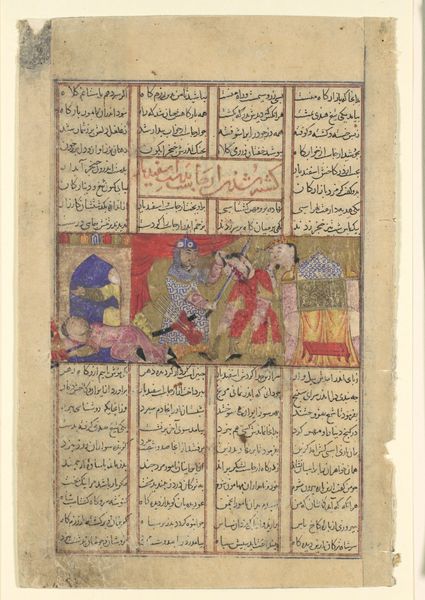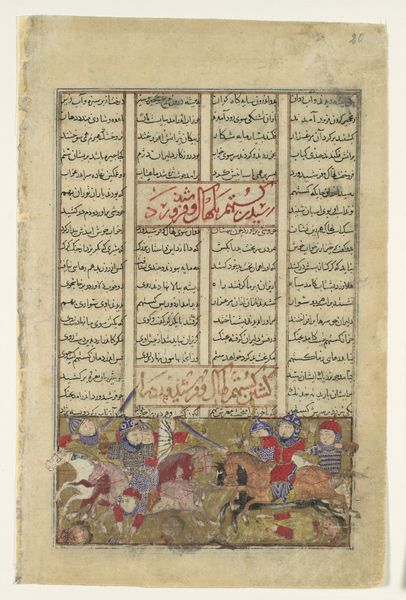
"Iskandar in the Presence of the Brahmins", Folio from a Shahnama (Book of Kings) of Firdausi 1305 - 1365
0:00
0:00
mixed-media, painting, paper, ink
#
portrait
#
mixed-media
#
narrative-art
#
painting
#
figuration
#
paper
#
ink
#
coloured pencil
#
men
#
islamic-art
#
miniature
#
watercolor
Dimensions: Page: H. 8 1/16 in. (20.5 cm) W. 4 7/8 in. (12.4 cm) Painting: H. 1 7/8 in. (4.7 cm) W. 4 5/16 in. (11 cm)
Copyright: Public Domain
Editor: Let's talk about "Iskandar in the Presence of the Brahmins," a mixed-media painting on paper created sometime between 1305 and 1365, now at the Met. What strikes me is how this piece melds Persian and Indian artistic traditions, depicting what appears to be a formal gathering in such vibrant colors. What do you see in this work, especially considering its historical context? Curator: From a historical perspective, this folio is fascinating because it showcases the dialogue between cultures in illustrated manuscripts. The Shahnama, or Book of Kings, served not just as a historical record but as a cultural touchstone, employed by various rulers to legitimize their power through association with legendary figures like Iskandar, who is Alexander the Great. Consider how the artists have chosen to represent Iskandar, emphasizing his engagement with the Brahmins. Why do you think the patron commissioned such a scene? Editor: Perhaps to highlight their own ruler's wisdom or openness to different cultures? Showing Iskandar listening to spiritual leaders suggests a just and enlightened reign. Curator: Exactly! This painting tells us about the social and political environment of its time. The portrayal of figures, their costumes, the architectural details - all convey power dynamics and cultural values. How does the museum’s display of this work influence our understanding of its original intent? Editor: Good point! Seeing it in a museum context isolates it from its original book format, potentially emphasizing its artistic value over its narrative function. Curator: Precisely. Its public role is transformed. Originally, it served as visual reinforcement for a specific elite audience reading the Shahnama, bolstering their understanding of kingship. Now, it represents intercultural exchange and aesthetic appreciation. Editor: It's amazing to think about how something initially made to support a ruler's authority now invites conversations about cross-cultural understanding! Curator: Indeed. By understanding its socio-political history, we realize that it’s far more than just a pretty picture; it’s a reflection of how power and knowledge were negotiated in a specific historical moment.
Comments
No comments
Be the first to comment and join the conversation on the ultimate creative platform.
